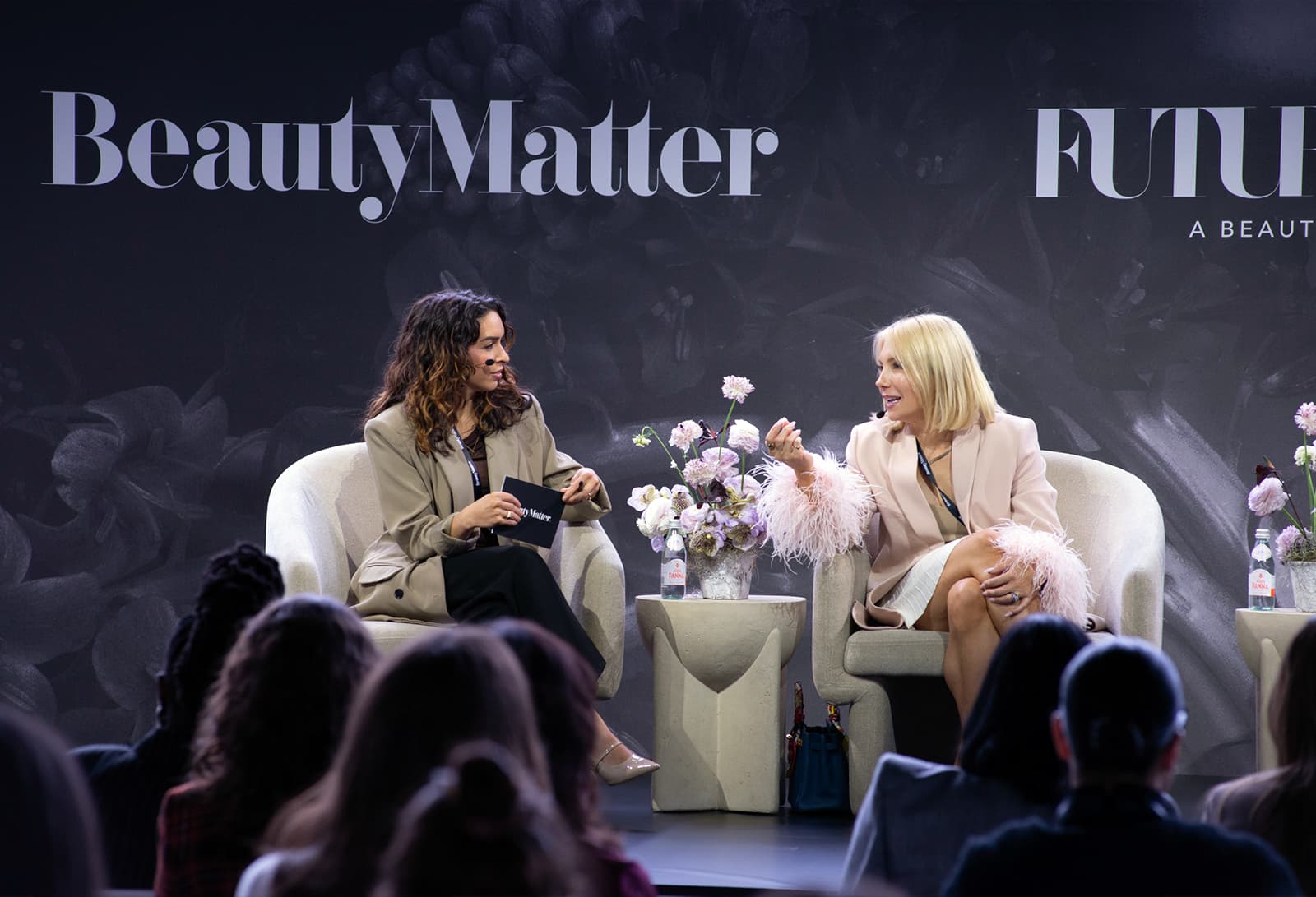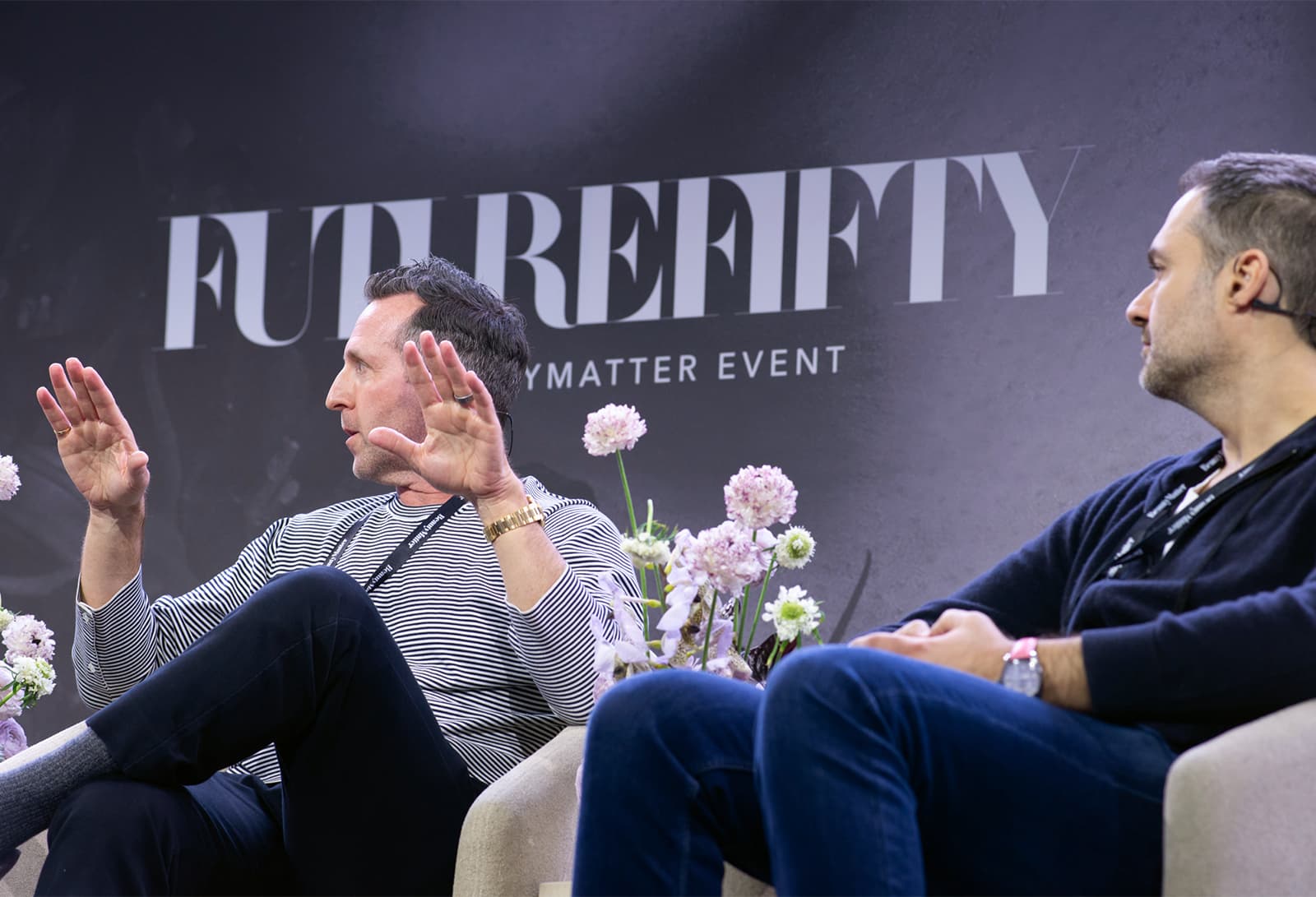In today’s world, the lines between innovation and imitation have never been blurrier—or more profitable. What was once considered a knockoff is now celebrated as a dupe, and for a new generation of beauty consumers, this distinction barely matters. At BeautyMatter’s 2025 FUTURE50 divisive panel moderated by Editor Cristina Montemayor, “Innovations vs. Imitations: Opportunities within Dupe Culture,” industry leaders unpacked what’s really at stake and what’s up for grabs as brands confront a consumer base that values price, transparency, and relatability over pedigree.
As BeautyMatter imagined when developing this panel, the topic can be polarizing and conflicting, sparking controversial conversations both offline and online. The hall at FUTURE50 was filled with intense and palpable tension as the audience reacted to the panelists with hushed reactions and whispers. This panel was indicative of why BeautyMatter exists—a platform built for diving into difficult topics and facilitating respectful conversations. A number of people, including Mireille Vega, CEO of VGAM Biome, said this conversation made them rethink brand equity and dupes.
“I can now see the potential benefits to being duped—not that it is something that I would strive for now; still it would mean that my brand would have brought enough value to my community… and enough attention from other communities; those that may not be aligned with [our] values and perhaps those that are willing to compromise,” she said in a post. This panel was unarguably the talk of the summit.
Meridith Rojas, Chief Marketing Officer at MCoBeauty; Sergio Tache, founder of fragrance disruptor Dossier; and Ryan Babenzien, CEO of microbiome-focused beauty brand Jolie, all brought contrasting perspectives to the topic, but they agreed on one key point, and that is dupe culture is more than just a product trend; it's also a cultural force reshaping the business of beauty.
Democratizing Access
For Rojas, whose work at MCoBeauty directly engages with dupe culture, the shift is both philosophical and strategic. “It’s about the democratization of beauty,” she said in the panel. “Why shouldn’t everyone have access to luxury-inspired formulas, packaging, and ingredients?” she asked the audience.
Rojas sees dupe culture not as parasitic but as liberating—especially for consumers priced out of prestige beauty. MCoBeauty intentionally leaned into comparisons with brands like Charlotte Tilbury and Tatcha, not to undermine the brands but to expand access to their aesthetic. “We never say we’re the same, but that’s not to say the quality’s different,” Rojas clarified. “[However], if you can’t afford a $70 moisturizer, why shouldn’t you be able to access that experience for $15?”
This reframing has struck a chord with value-driven shoppers, particularly Gen Z. It has also drummed up controversy within the industry. “It’s a generation that’s not interested in luxury for luxury’s sake,” Rojas added. “They want value, transparency, and performance.”
For Tache, founder of Dossier—a brand built around affordable alternatives to luxury fragrances—the dupe conversation starts with one hard truth: “There’s not that much originality in the market.” According to Tache, most mainstream fragrance launches follow the same olfactory blueprint. “In the end, they all smell a little bit the same. It’s fruity, floral, woody, etc.”
Tache doesn’t see this as a reason to condemn the category but as an invitation to rethink it. Dossier’s model doesn’t shy away from its source material; rather, it names it. On each product page, Dossier specifies which luxury fragrance inspired the scent, turning imitation into a promise of transparency. “We’ve always wanted to be honest with our customer,” said Tache. “They have the right to know what they're buying.”
This honesty has become a value proposition in itself—especially in a space where opacity and markups are the norm. While legacy perfume houses rely on tradition and prestige, Dossier positions itself as accessible and direct. And while critics argue this erodes brand equity, Tache flips the narrative. “If a brand’s whole identity collapses because of a $29 dupe,” he said, “then what value were they really offering?”


Not All Brands Can—or Should—Play the Game
While Rojas and Tache actively operate within the dupe economy, Babenzien’s take is more nuanced. As the CEO of Jolie, a beauty wellness brand centered on filtered shower systems and microbiome health, Babenzien doesn’t consider himself in the dupe business—but that doesn’t mean he’s immune to its influence.
“I’ve seen Jolie clones popping up left and right,” he shared. “They’re copying the product, the packaging, even our messaging.” But rather than react with hostility, Babenzien sees imitation as a symptom of momentum. “It’s almost a signal that you’re onto something. The question is, how do you keep innovating so you’re not replaceable?”
For Babenzien, the real challenge isn’t the dupe itself—it’s staying ahead of it. Jolie’s differentiation lies in its science, research, and long-term roadmap. “A copycat might match you on the surface,” he said, “but can they go deeper?” Still, he warns against dismissing dupes outright. “Brands that spend too much time fighting off the clones might lose sight of their real job, which is to build community and deliver value,” he added.
The most forward-thinking idea that emerged from the panel wasn’t about competition but about context. In a marketplace where the social currency of a product is as important as its ingredients, it seems as though dupe culture acts less like a threat and more like a signal of taste, relevance, and unmet demand.
“People used to see dupes as theft,” Rojas said. “Now, they see them as a wink.” For many brands, being duped has become a badge of honor. It suggests cultural significance. It means consumers are paying attention.
But there’s also a shift in power dynamics at play. Where traditional beauty once relied on aspirational distance, dupe culture closes the gap. It invites consumers in. “You’re no longer just buying a product,” said Tache. “You’re participating in a conversation.”
The Future: Beyond Duplication
If dupe culture was once seen as a reactive space—one where brands chased trends and mimicked bestsellers—its most evolved players are now proactive. They’re not just copying formulas; they’re reimagining how access, storytelling, and ethics converge.
Rojas believes the dupe economy is still misunderstood by much of the industry. “There’s so much condescension toward brands that serve a price-conscious audience,” she said. “But these consumers are smart. They do the research. They know what they want, and they know what they’re paying for.”
Although Babenzien was clearly against dupe culture, he echoed this sentiment, emphasizing the importance of values over novelty. “Innovation isn’t just about newness,” he said. “It’s about solving problems that matter.” Meanwhile, Tache sees the category evolving into a hybrid space, where creativity and accessibility are no longer at odds. “Dupes started as a workaround,” he said. “Now they’re becoming their own lane.”
In a beauty economy increasingly driven by virality and democratized taste, the once-clear line between authentic and imitation is fading. This, however, isn’t the end of innovation. Experts say it’s reinvention. As consumers redefine what quality, prestige, and originality mean to them, brands that listen—rather than litigate—will be the ones to thrive. “In the end,” Rojas concluded, “everyone’s remixing something. The question is whether you’re doing it with intention.”
Key Takeaways: